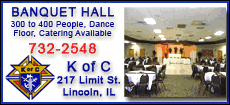 Potatoes are the first plant that comes to mind when we talk
about potato leafhoppers (must be something about the name), but
many other plants, ranging from beans to trees, can be affected.
You may be wondering what kind of damage a few little
leafhoppers can do, especially since they suck sap from plants
and aren't that big in size. Potatoes are the first plant that comes to mind when we talk
about potato leafhoppers (must be something about the name), but
many other plants, ranging from beans to trees, can be affected.
You may be wondering what kind of damage a few little
leafhoppers can do, especially since they suck sap from plants
and aren't that big in size.Leafhoppers suck sap and then
inject a toxin back into the plant. Along the same lines as
humans getting a mosquito bite, it's the extra that's injected
back in that causes the injury. Symptoms of leafhopper damage
start as yellow V-shaped areas on the tips of leaves. These
areas turn brown or black and then fall out, leaving a V-shaped
hole on the tip of the leaf. This is a symptom but not the only
injury. Large numbers of leafhoppers can kill potato and other
plants.

Controls for leafhoppers are warranted with very low numbers.
In alfalfa fields, it is recommended to treat when two
leafhoppers are caught in a sweep net in alfalfa over a foot
tall. Garden treatment options for potatoes include Sevin,
bifenthrin, permethrin and rotenone as common insecticide
choices available to homeowners. Most trees and shrubs can be
treated with Sevin, permethrin or bifenthrin.
Rust
This is basically a reprint from a few weeks ago --
predicting rust in lawns is one thing, but having it full-blown
is something different. The drier weather we have been
experiencing has made rust an all-out problem for many
homeowners.
As grass growth slows, rust will be one of the lawn fungi we
are dealing with. Rust appears as an orange or yellowish-orange
powder (spores) on grass leaf blades, especially when the
weather is dry in late summer to early fall. Rust typically
develops on lawns growing very slowly. Overall, the turf may
assume a yellow, red or brown appearance. Close examination will
reveal the pustules, which easily rub off on your hand. Rust
spores can easily be tracked into homes.
[to top of second column]
 |

Low fertility (in particular nitrogen) and low water availability
slow down turf growth, allowing rust to develop. Seasons with excess
rain may have rust outbreaks due to loss of available nitrogen.
Light, frequent rainfall and cool nights with heavy dew add to the
ideal conditions for rust to develop. Warm, cloudy, humid weather
followed by hot, sunny weather also favors rust development on
lawns. Kentucky bluegrass, perennial ryegrass and tall fescue are
all affected, depending on cultivars. Rust spreads through air,
water, shoes, equipment and sod. Rust may weaken turfgrasses and
make them more susceptible to other problems.
Control rust through sound turf management. Begin by choosing a
quality blend of turfgrass seed. Resistance to rust can vary
according to the race of the disease present. Maintain lawns through
sound watering, mowing and fertilizing. If you are watering, water
early in the day so the grass dries quickly. Manage problem thatch.
Increase vigor with an early fall nitrogen application, but don't
overdo it. Check soil phosphorus and potassium levels through soil
testing. Also assure good airflow over the site and good light
penetration by pruning trees and shrubs in the area near the lawn.
When rust occurs at this time, improved growth conditions of
early fall often get lawns growing more vigorously and the rust
fades away. Early September is a key time for fertilization. If
conditions are dry, irrigation is also needed to increase the growth
rate of the lawn.
Fungicides are rarely suggested on home lawns for rust control.
Focus on the listed cultural practices described above.
[By
JOHN FULTON,
University of Illinois Extension, Logan County]
 |